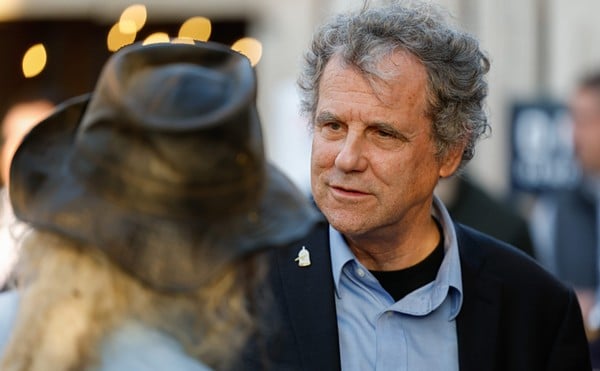|
Ohio State lost its chance. North Carolina tried defending the national championship but couldn't hold off George Mason. Out. Xavier, Kentucky and Indiana — gone. Kansas couldn't beat Bradley. Northern Iowa lasted as long as Iowa.
On selection Sunday, 65 college basketball teams are thrilled or relieved. Within a week, 49 of those teams are done.
And the teams that are mad on selection Sunday? Many are still playing.
The more realistic among them are happy that way.
A week into the NCAA Tournament, the University of Cincinnati basketball team was still playing for the National Invitational Tournament championship, which is a lot better than playing for nothing. So the NCAA shut UC out for the gold ring, but the brass ring was still there.
Would you rather be playing or not playing? Much better UC teams have been sidelined by now, with no chance to win anything. This team, ripped off by the selection committee, benefits greatly — a couple or three more home games, maybe an extra week or three of practice, more opportunities to develop kids and a pretty good competition.
Most of a lifetime ago, the NIT was even more prestigious than its competitor, the NCAA Tournament. The NIT and the NCAA competed against each other for the best fields. Because both fields were small, it was possible for teams to play in both tournaments and, in 1950, City College of New York won both.
Despite its built-in advantage of being the organization to which all the major university athletic departments answer, the NCAA still needed three decades, until the late 1960s, before its tournament could overtake the NIT.
The NCAA could make a rule saying schools could participate in only one postseason tournament, as it did in 1953. The NCAA also could write a rule such as the 1961 "Expected Participation Rule," which said NCAA schools were "expected" to participate in the NCAA Tournament over any other. The next year, Dayton, Houston, Loyola of Chicago, Mississippi State and St. John's all picked the NIT over the NCAA anyway.
In 1968, Bob Knight turned down an NCAA invitation at Army to play in the NIT. In 1970, Al McGuire's Marquette team finished the regular season 24-1, ranked eighth by the Associated Press. But when the NCAA shipped Marquette out of the Midwest Regional to make room there for Notre Dame, McGuire told the NCAA what it could do with its plan by choosing the NIT, then winning it.
Coaches with little grievances against the NCAA could always make their point by picking the NIT — they became known as NITpickers. But those days were soon to close. In 1975, the NCAA expanded its tournament from 22 to 32 teams and lopped off a rule allowing only conference champs and top independents to join, creating the process of at-large selections. In 1981, the NCAA closed the deal with the "Commitment to Participate" rule requiring any team invited to the NCAA to accept the invitation.
Now teams don't go to the NIT unless the NCAA doesn't want them. In effect, the NIT says you're in the top third of the college basketball teams but not the top 15 percent. At the end of every football season, schools that turn up their noses at the NIT make deals to play in bowl games that say a lot less.
The NCAA maintains a death grip on its basketball tournament, which is said to generate a good 90 percent of the organization's revenue. The television contract with CBS alone is worth $6.2 billion over 11 years through 2010. The NIT's puny TV deal with ESPN calls for $1.85 million to $3 million per year from 2001 through 2010.
Last August, the NIT had its day in court with the NCAA. The NIT sued the NCAA, saying the commitment to participate rule, among others, amounted to restraint of trade under federal law and that the NCAA's monopolistic practices threatened to drive the NIT out of business.
The Metropolitan Intercollegiate Basketball Association (MIBA), which operated the NIT, was composed of five New York universities: St. John's, Fordham, Wagner, New York University and Manhattan College. MIBA produced decades-old minutes in which NCAA officials were alleged to say they'd expand their field and adopt the participation rule to disadvantage the NIT.
The case went to trial in New York last August. Knight testified by video for the NIT, with Memphis coach John Calipari and Creighton coach Dana Altman also on the NIT's witness list. The NCAA's witness list included Duke coach Mike Krzyzewski, Kentucky coach Tubby Smith, Michigan State coach Tom Izzo and Syracuse coach Jim Boeheim.
Knight reportedly said in his testimony that he always believed the NCAA was out to eliminate the NIT, that certain circumstances make the NIT more attractive than the NCAA Tournament and that open competition among the tournaments could bring them "very, very close" in two or three years.
Knight added that 20 NIT teams can beat 20 NCAA teams, which raises the possibility that the NIT actually could overtake the NCAA if the latter were forced to drop its commitment to participate rule. The NIT isn't beholden to take the winners of weak conferences who almost never win NCAA games, and the NIT could further weaken the NCAA by attracting top teams.
Despite its reasonable contention that it has a right to run a basketball championship, the NCAA found itself on shaky anti-trust ground. The issues are complicated and were to be decided by New York jurors who might be expected to hold NIT sympathies. The NIT attorney, Jeffrey Kessler, beat the NFL in a 1991 landmark case that opened the way to free agency.
Wishing to not test its luck and figuring MIBA just wanted money, the NCAA found a solution. The NCAA simply bought the NIT, paying the MIBA schools $40.5 million for the tournament plus $16 million to end the suit. The MIBA then dissolved.
The NIT's future is unclear now that the NCAA can do what it wants with the tournament. But we still have it for now. And if you're still playing while other schools are sitting, you're glad for that. UC might even have made a point.





